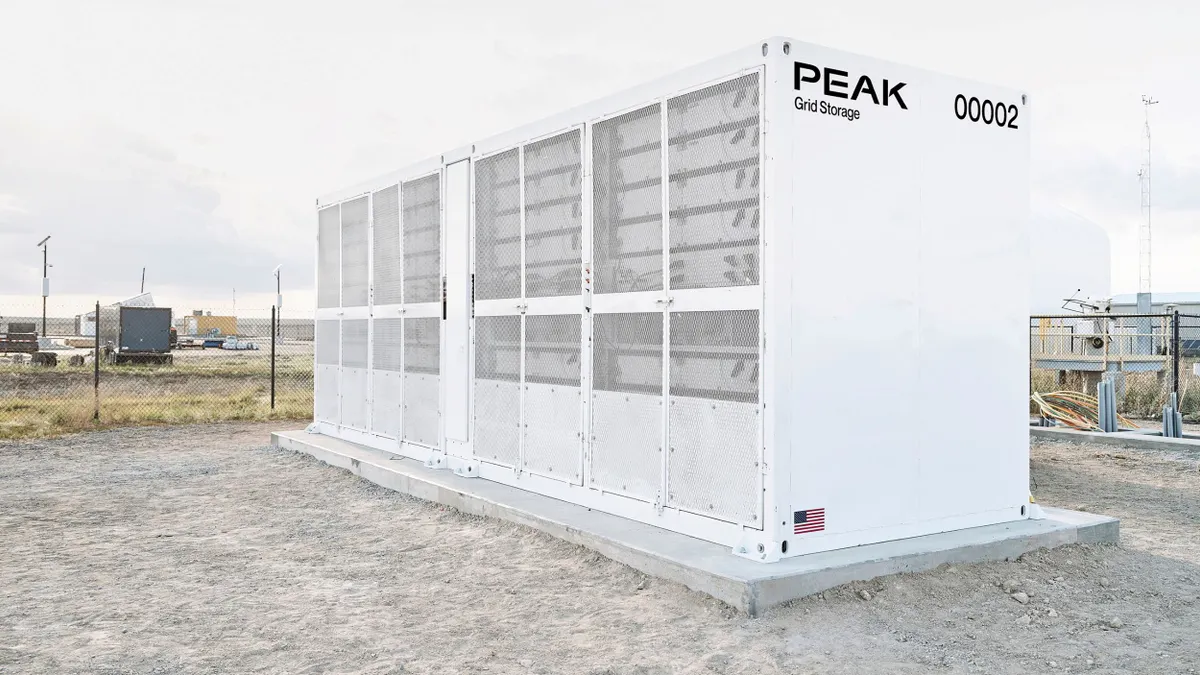Over half the utility executives queried in Utility Dive’s just-released State of the Electric Utility 2015 survey picked energy storage as the most important emerging technology.
When asked to identify the three emerging technologies their utilities should invest more in, some 51% of the executives surveyed picked storage. Their second choice was energy efficiency (41%), followed by utility-scale renewables (37%) and demand response (37%). Distributed solar (32%), in fifth, was the only other technology to get over 30% of the attention among the top twelve nominees.
“Energy storage is such a big deal that in the electric utility business we called it the holy grail,” explained former Southern California Edison Senior Vice President Jim Kelly at the recent VerdeXchange 2015 conference. “We knew that if we tried to get higher amounts of wind and solar on the grid, eventually it would break unless we had energy storage.”
From the Utility Dive survey results, it appears utility executives would agree with Kelly that “2014 was the year of energy storage.” The turning point, Kelly said, was California Public Utilities Commissioner Carla Peterman’s historic order, in the wake of AB 2514, mandating investor-owned utilities procure 1,325 megawatts of energy storage by 2020. With some municipally-owned utilities following voluntarily, Kelly said, “we are now seeing storage as the emerging story in the energy markets in California and the West.”
“Utilities are embracing storage because they don’t see it as a threat,” explained Berkshire Hathaway Energy Vice President for Legislative and Regulatory Affairs Jonathan Weisgall. “It is not taking away revenue or electrons. It is enhancing what utilities are doing to deal with renewables.”
Water and gas storage
Most people – and perhaps most utility executives – think of energy storage as lithium ion batteries but they are “by no means the whole story,” Kelly said in introducing a panel presenting an array of storage concepts.
“Some 80% of the Quebec demand is along the St. Lawrence River, but our generating capacity is 1,000 or more miles away in the province’s hydropower,” explained Hydro-Québec Research Institute Storage/Conversion of Energy Advisor James Jessop. “Our reservoir is about 170 gigawatt-hours of capacity, which is a huge battery.”
The naturally pumped storage allows Hydro-Québec to obtain 99% of its electricity from emissions-free renewables. “Goals for energy storage,” Jessop said, “include regulating wind and solar and contributing to smart features like vehicles-to-homes and vehicles-to-grid.”
Because Sempra Energy/Southern California Gas is subject to the state’s AB 32 climate change regulations, explained Director of Emerging Technologies Jeff Reed, it is “looking very hard at solutions for managing emissions and the first answer is energy efficiency.”
That is an important validation of the executives in Utility Dive’s survey who cumulatively put energy efficiency second. They may have been thinking about the Obama administration’s coming climate change regulations.
Renewable natural gases are the second solution, Reed said. Through electrolysis, renewable methane can be used to store solar energy.
“An electrolyzer is a fuel cell running in reverse,” he explained. “It can take excess solar energy-generated electricity and water and split the water into hydrogen and it can be further converted into methane which could be used as a vehicle fuel for natural gas or hydrogen-fueled vehicles.”
The concept meets the dictates for storage established by the Peterman mandate, Reed said.
Out-of-the-box storage
Energy storage has been around for decades as pumped hydro, said former Southern California Edison exec Steve Sullivan by way of introducing Advanced Rail Energy Storage (ARES). The innovative technology uses rail cars “to replicate what pumped storage does without water.”
“It is a software-equipped train with regenerative braking on a track on a slope,” he explained. “It is gravity-based. A mass going up and down a hill. But it has a much lighter environmental footprint than pumped storage and it requires no water.”
ARES can be used as conventional energy storage or for ancillary services and grid stabilization. “It is like a giant slinky going up and down the track and either adding or taking off voltage and either increasing or decreasing frequency,” Sullivan said.
When the announcements of the first round procurements to meet California’s storage mandates come later this spring, Sullivan said in a roundabout way of acknowledging that ARES is out-of-the-box thinking, “we will all find out which kinds of projects the utilities think are good investments.”
Go Takizawa, Chief Representative of Japan’s New Energy and Industrial Technology Development Organization (NEDO), concluded the panel with a rundown of pilot projects now in the works using newer than lithium ion battery chemistries. They included sodium-sulfur, flow, and lithium-sulfur products.
Duke Energy, it was recently announced, is also experimenting at its Marshall Station, NC, solar project with as many as six different battery chemistries.
“We got a good response to our storage order because we aren’t obstructing where the market for transmission-level, distribution-level, and behind-the-meter storage could go,” Commissioner Peterman said. “We allow utility ownership and third party ownership. We put a 50% cap on utility ownership only because this is a new market and everyone will benefit from the learning that comes out of it.”
Kicker: Communication
There is one aspect of storage not yet getting adequate attention, Commissioner Peterman mentioned privately to Utility Dive.
“We need to support storage with good communications technology and infrastructure so that the storage device can interact with the utility and the grid operator. That will be a critical component.”
And, if you're curious about rail storage technology, check out the video below:






















